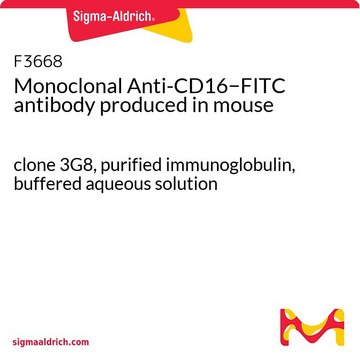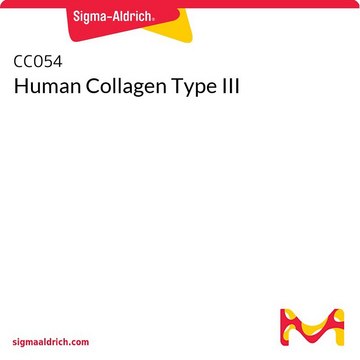Wichtige Dokumente
C7673
Monoclonal Anti-CD14 antibody produced in mouse
clone UCHM-1, purified immunoglobulin, buffered aqueous solution
Synonym(e):
Monoclonal Anti-CD14
About This Item
Empfohlene Produkte
Biologische Quelle
mouse
Konjugat
unconjugated
Antikörperform
purified immunoglobulin
Antikörper-Produkttyp
primary antibodies
Klon
UCHM-1, monoclonal
Form
buffered aqueous solution
Mol-Gew.
antigen 55 kDa
Speziesreaktivität
human
Methode(n)
flow cytometry: 5 μL using 1 × 106 cells
Isotyp
IgG2a
UniProt-Hinterlegungsnummer
Versandbedingung
wet ice
Lagertemp.
2-8°C
Posttranslationale Modifikation Target
unmodified
Angaben zum Gen
human ... CD14(929)
Suchen Sie nach ähnlichen Produkten? Aufrufen Leitfaden zum Produktvergleich
Spezifität
3rd Workshop: code no. 203
4th Workshop: code no. M24
Immunogen
Anwendung
- Flow cytometry at a dilution of 5μL using 1 × 106 cells
- Immunofluorescence.
- Immunoblotting.
Biochem./physiol. Wirkung
Zielbeschreibung
Physikalische Form
Haftungsausschluss
Sie haben nicht das passende Produkt gefunden?
Probieren Sie unser Produkt-Auswahlhilfe. aus.
Lagerklassenschlüssel
10 - Combustible liquids
WGK
nwg
Flammpunkt (°F)
Not applicable
Flammpunkt (°C)
Not applicable
Hier finden Sie alle aktuellen Versionen:
Besitzen Sie dieses Produkt bereits?
In der Dokumentenbibliothek finden Sie die Dokumentation zu den Produkten, die Sie kürzlich erworben haben.
Unser Team von Wissenschaftlern verfügt über Erfahrung in allen Forschungsbereichen einschließlich Life Science, Materialwissenschaften, chemischer Synthese, Chromatographie, Analytik und vielen mehr..
Setzen Sie sich mit dem technischen Dienst in Verbindung.







